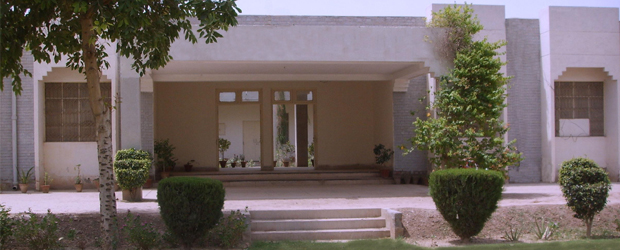
ContactsDr. Saghir Ahmad Cotton Botanist Phone: 061-9239521 E-mail: saghirahmad_1@yahoo.co |
Research activities
|
Research ProjectsPARB Project No.27 Introgression of cotton leaf curl virus resistance genes from Gossypium arboreum (desi cotton) into Gossypium hirsutum (upland cotton). Cotton leaf curl virus disease is a major impediment in enhancing cotton production in Punjab. Our main research focus is to develop cotton leaf curl virus resistant varieties. Desi cotton is resistant to CLCuV disease. Therefore, a project granted by PARB was started in 2009 to transfer CLCuV resistant genes from desi cotton into American cotton. PARB Project No.215. Development and commercialization of Cotton Leaf Curl Virus resistant/tolerant indigenous transgenic Bt and Glyphosate resistant cotton hybrids. Cotton crop faces insect problem such as bollworms in addition to weeds competition and CLCV. All these factors adversely affect the yield of the already low yielding open pollinated cotton varieties compared with hybrids. This project will address bollworm problem with Bt genes, weeds problem with Glyphosate tolerant genes and improved CLCV tolerance. Over and above this, the hybrids will be better yielder than OP varieties. |
Introductions
Cotton is the most important cash crop of Pakistan. It is a major source of foreign exchange earnings and also provides livelihood to millions of people in Pakistan. Southern Punjab (Multan, Bahawalpur, Rahim Yar Khan and D.G. Khan Divisions) having cotton–wheat-cotton cropping pattern is a major belt of cotton production in Punjab. Cotton Research Station Multan is the first and the oldest cotton research centre established in Southern Punjab with the main objective of developing cotton varieties particularly for this cotton belt. It is the hub of cotton research activities and up till now16 varieties of cotton have been evolved at this research station which is the highest number in Punjab. MNH-93, S-12 and MNH-886 (Bt.) have been the most popular varieties cultivated on more than 60% and about 30 % area in Punjab and Sindh provinces respectively. Total impact on economic contribution of CRS Multan verities is estimated about 600 million rupees which is the highest share by any other cotton research centre in Pakistan. At present the main focus of research study is to solve major problem of Cotton Leaf Curl Virus disease which has been causing a colossal loss of 2-3 million bales annually. Besides heat tolerance and drought tolerance are the other main areas where research work is actively going on. Currently, study on two projects funded by Punjab Agriculture Research Board “Introgression of cotton leaf curl virus resistance genes from Gossypium arboreum (desi cotton) into Gossypium hirsutum (upland cotton) and Development and commercialization of Cotton Leaf Curl Virus resistant/tolerant indigenous transgenic Bt and Glyphosate resistant cotton hybrids” is also in progress. The peculiar feature of this research station is its extensive studies on interspecific hybridization. We have maintained germplasm of 22 species and developed interspecific hybrids. We have collaboration with USDA through ICARDA for exploring CLCuV resistant sources of cotton, and Nanjing Agriculture University China where one scientist from this research station is doing Ph.D. on identification of cotton leaf curl resistance through molecular techniques. We are also imparting training to undergraduate students of different universities and colleges. At present we have a team of 21 scientists constituting four sections, i.e., Plant Breeding & Genetics, Entomology, Agronomy and Fiber Technology. 40 experiments are conducted on various aspects of cotton on 21 acres of land.
The main objectives of this station are as under: -
Cotton Research Station Multan was established in 1935 as a testing centre and upgraded in 1958 as full fledge Cotton Research Station Multan. It is the oldest and important cotton research centre in Punjab.
Production = 25 million bales Consumption = 22.5 million bales Seed cotton yield = 1200 kg/ha Exports = 30 billion us dollar |

